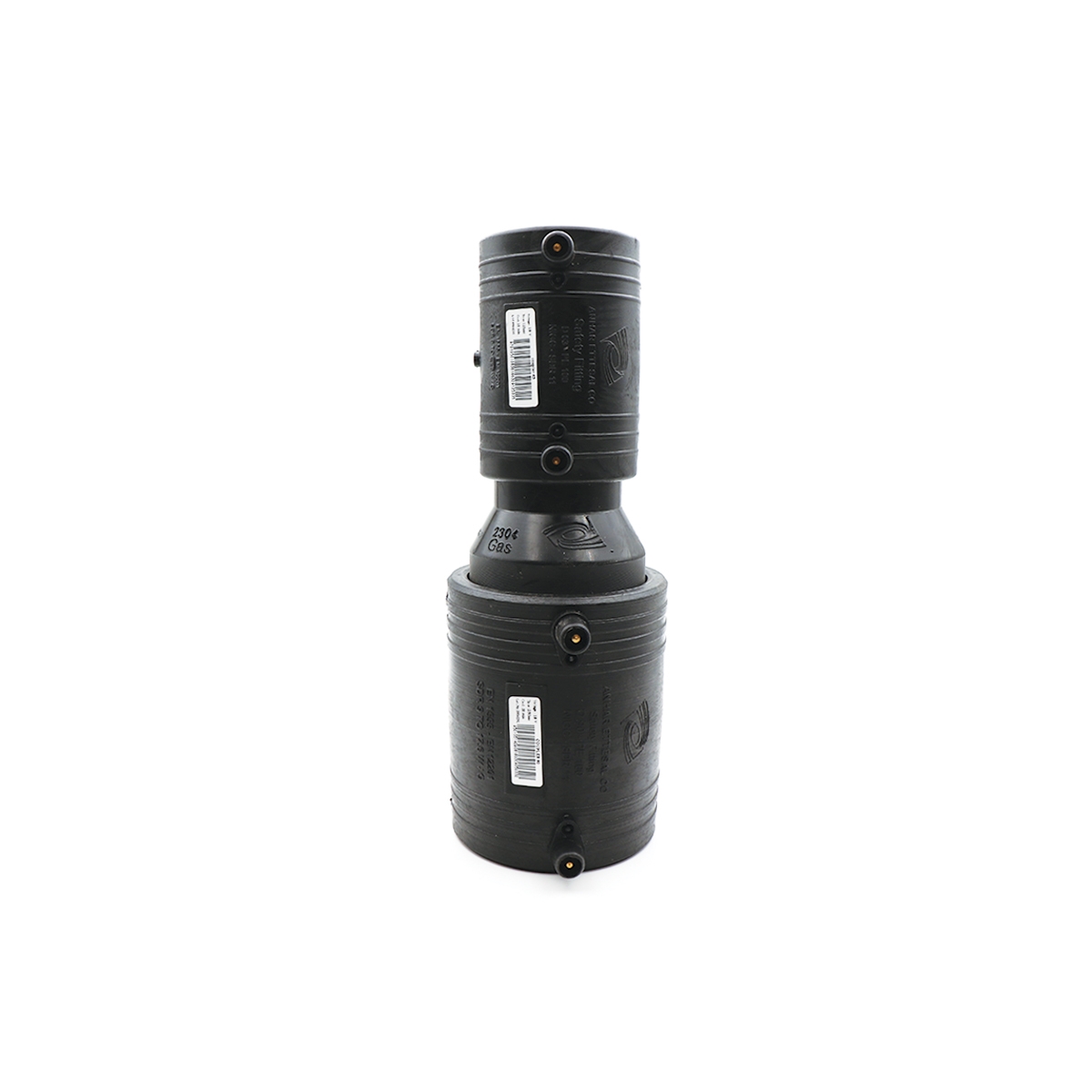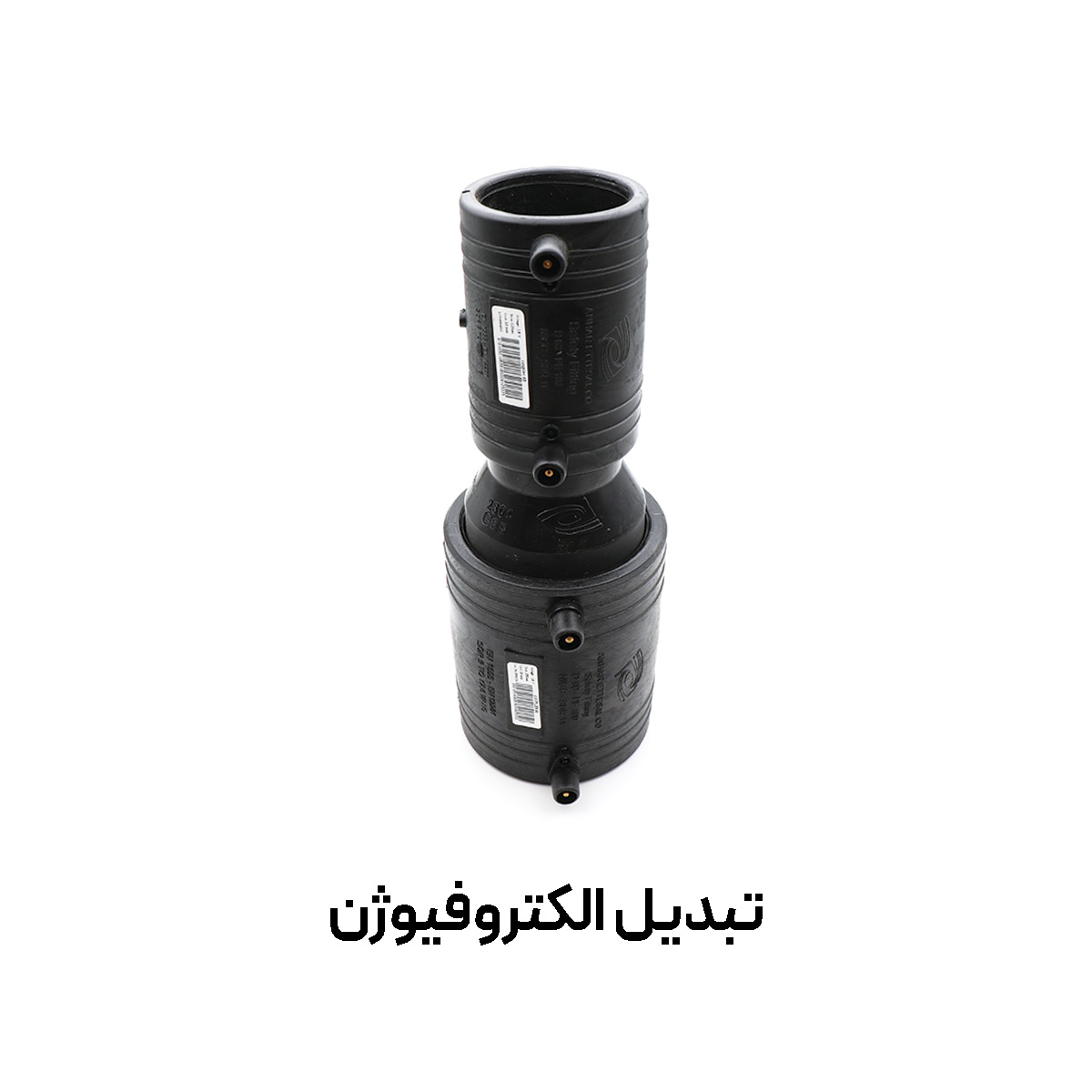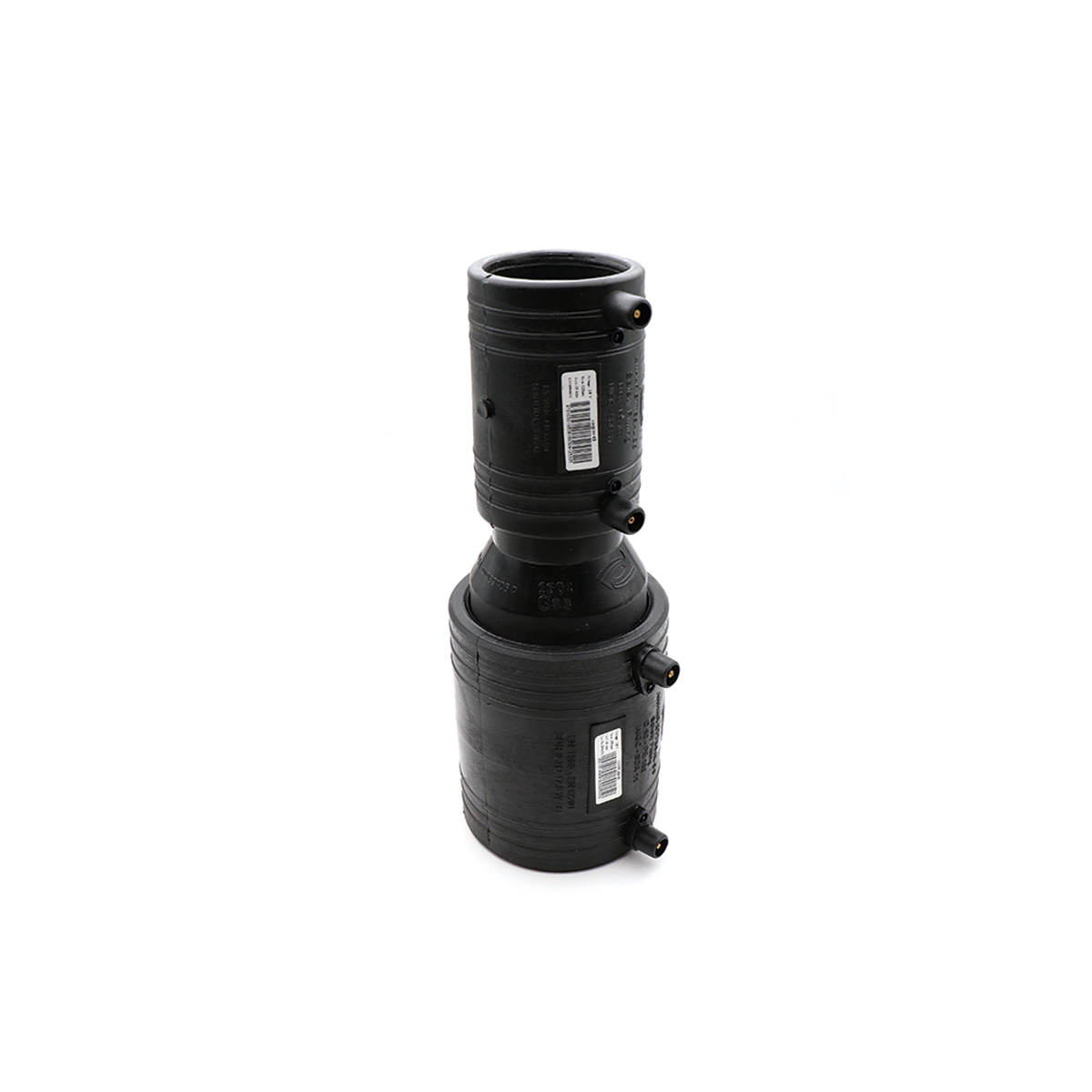In pressurized fluid transmission networks, polyethylene electrofusion reducers have gained a key position thanks to their ability to create a homogeneous and fully leak-tight joint. By means of the spiral copper conductor embedded in the body, this fitting converts electric current into uniform heat and, in a short time, melts and integrates PE100 pipes in an isolated environment—a process that not only increases the joint’s hoop strength, but also reduces the risk of leakage and local corrosion to virtually zero. Below, we systematically examine the aspects that should be considered when selecting and installing an electrofusion reducer.
Material nature and pressure class
The bodies of next-generation electrofusion reducers are made from 100% rated PE100 RC resin; in the Slow Crack Growth test in accordance with EN ISO 13479, this material has recorded a failure time of more than 8,000 h, and consequently its long-term resistance in gas and water lines with an operating pressure up to 16 bar has been verified. The diameter-to-wall-thickness ratio (SDR) is usually taken as 11 or 13.6 so that both weight balance is maintained and welding parameters remain standard.
Reference standards and quality control requirements
ISO 4427-3 / EN 12201-3: Dimensional specifications and tolerances
ISO 8085-3: Welding procedure and permissible void content
ISO 1167: Long-term pressure test (1000 h)
GIS/PL2-4 (specific to gas lines in the UK): Requirements for traceability and welding machine barcoding
Comparison of common methods for joining polyethylene pipes
| Key feature | Electrofusion | Butt fusion (butt-welding) | Mechanical coupling |
|---|---|---|---|
| Energy input | Low-voltage electricity (control chip) | Direct heater element | Torque on bolts only |
| Required workspace | Minimal; suitable for on-surface repairs | Large; requires clamping jaws | Medium |
| Applicable diameters | 20–630 mm (up to 1200 mm in special models) | 63–1200 mm | 20–315 mm |
| Ability to join different-size pipes | With an electrofusion reducer | Requires facing/lathe | Limited |
| Leak test after installation | Air/water pressure + barcode scan | Air/water pressure | Air/water pressure |
| Data traceability | Yes (serial no., date, weld parameters) | No | No |
Dimensional range and typical welding parameters
| Inlet × outlet diameter (mm) | SDR | Heating time (s) | Cooling time (min) | Max. operating pressure (bar) |
|---|---|---|---|---|
| 63 × 50 | 11 | 45 | 3 | 16 |
| 90 × 63 | 11 | 65 | 4 | 16 |
| 160 × 110 | 11 | 110 | 6 | 10 |
| 250 × 200 | 13.6 | 200 | 10 | 10 |
| 400 × 315 | 13.6 | 310 | 18 | 6 |
(The data are extracted from third-party inspection companies’ test protocols and may vary slightly depending on the manufacturer.)
Surface preparation and assembly requirements
- Precise peeling: at least 0.2 mm of the oxidized layer must be removed with a standard scraper to ensure effective contact.
- Axial alignment: a misalignment error exceeding 1% of the nominal diameter generates residual shear stress and must be compensated with an alignment clamp.
- Auto-coding: most reducers feature an ISO-13950 barcode; the operator simply scans the barcode and the welding unit automatically sets current and time.
- Post-weld inspection: the transparent Fusion Indicator ring must pop out uniformly; burnt or non-uniform discoloration indicates excessive temperature.
Operational considerations in gas and water lines
- Ambient temperature range: −10 to +40 °C; at lower temperatures, use a heated enclosure or thermal tent.
- Pressure pulses: in gas lines with sudden pressure changes, stainless-steel restraint rings are recommended.
- In-pipe flushing: after joining, clean with a 1% chlorine solution or dry nitrogen—depending on the fluid—so contaminants do not return to the fusion zone.
Factors affecting service life
- Resin density and molecular weight: the highest ESCR (environmental stress crack resistance) is achieved in bimodal-PE100 grades.
- Copper winding quality: wire diameter and pitch uniformity directly affect heat uniformity; the standard allows ≤ ±5% variation in cross-section.
- Weld data management: storing the log file of each joint enables traceability and failure analysis and is a contractual requirement for critical projects.
Applications beyond downsizing
Although the primary purpose of these reducers is to decrease pipe diameter and match downstream equipment, they are also used as multi-diameter couplers in branch lines of petrochemical complexes, pressurized irrigation systems, fire-fighting networks, and even geothermal cooling circuits. The combination of PE’s mechanical flexibility and chemical resistance with reliable sealing minimizes the risk of leaks of corrosive or energy-carrying media.
Maintenance and periodic inspection recommendations
- Once a year, joints exposed to direct UV should be checked with a thermography camera to identify non-uniform hot spots.
- In urban gas lines, a 90-minute pressure test after five years of operation is suggested to ensure pressure drop does not exceed 0.25 bar.
- For irrigation lines, annual washing with 40 °C water and a neutral detergent removes biofilm and keeps heat transfer steady.
Supply chain and packaging
Reducers are generally supplied in polyethylene wrapping and multi-layer cartons with silica-gel desiccant. On each piece, in addition to the barcode, information such as diameter, SDR, raw-material traceability code, and production date is laser-marked so that handling in the warehouse and on the project site proceeds without error.
Environmental perspective
Using PE100—which can be recycled up to four times via re-granulation—reduces the project’s carbon footprint. Moreover, a calculated 50-year service life eliminates early replacement and curbs plastic waste in underground networks.
Tamambaha, as one of the official suppliers of electrofusion reducers, offers these products across a wide range of diameters and SDRs with a certificate of authenticity and an electronic weld-test log. For projects in the Middle East and neighboring regions, buyers may also obtain quotations from other authorized distributors, as project policies require, and ensure the delivered goods conform to the standards mentioned above.



